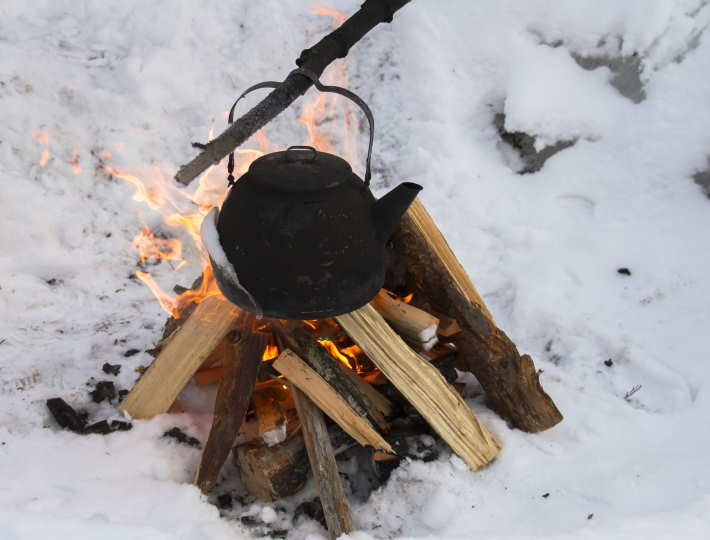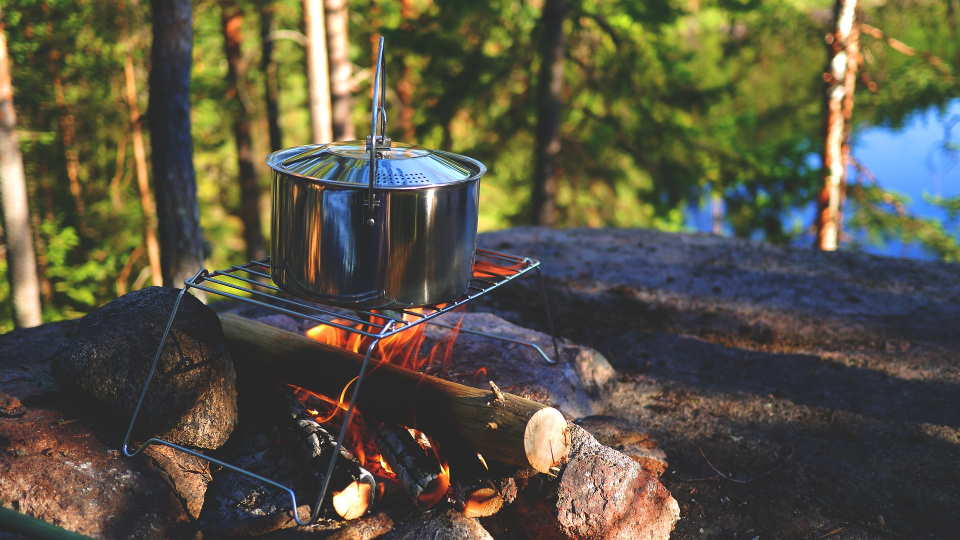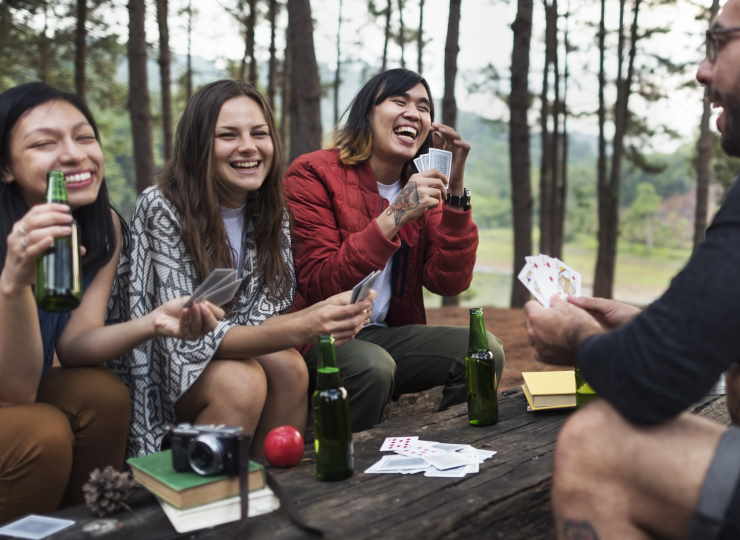Welcome to our camping cooking guide! If you’re planning a camping trip and wondering how to prepare delicious meals in the great outdoors, you’ve come to the right place. Cooking while camping can be a fun and rewarding experience, allowing you to enjoy tasty and nutritious meals amidst nature’s beautiful backdrop. We will explore various cooking techniques and tips for campers, including whether you can cook in a tent. Additionally, we’ll discuss the best food options to take with you on your camping adventure, as well as the most common camping food that campers typically enjoy. So, whether you’re a seasoned outdoor enthusiast or new to the world of camping, stay tuned for some mouthwatering ideas to enhance your camping culinary experience!
Introduction

Camping is a great way to escape from the hustle and bustle of everyday life and enjoy the great outdoors. And what better way to enhance your camping experience than by cooking delicious meals right at your campsite? Cooking while camping may seem like a challenge, but with a little planning and preparation, it can be a rewarding and enjoyable experience. We will provide you with some valuable tips and tricks on how to cook while camping.
First and foremost, it’s important to have the right equipment for cooking while camping. A portable camping stove or grill is a must-have item for any camping trip. These compact and lightweight stoves are designed specifically for outdoor use and can provide a reliable source of heat for cooking. Additionally, make sure to pack a set of cookware that is suitable for camping. Opt for durable materials such as stainless steel or cast iron that can withstand the rigors of outdoor cooking.
When it comes to meal planning, simplicity is key while camping. Opt for meals that require minimal preparation and cooking time. One-pot meals, such as stews, soups, and chili, are ideal for camping as they allow you to cook everything in a single pot, minimizing cleanup. Another great option is foil packet meals, where you wrap your ingredients in aluminum foil and cook them over the campfire or grill. This method not only saves time but also adds a delicious smoky flavor to your meals.

- Plan and prepare: Before embarking on your camping trip, take the time to plan and prepare your meals. Make a list of the ingredients you will need and organize them into meal kits to save time at the campsite. Pre-cut vegetables and marinate meats ahead of time to simplify the cooking process.
- Keep it simple: While camping, it’s best to stick to simple recipes that require minimal ingredients and cooking time. This will not only save you time and effort but also ensure that you can enjoy your time in nature rather than spending hours cooking complicated meals.
- Make use of the campfire: The campfire is not just for roasting marshmallows and telling stories. It can also be a fantastic tool for cooking while camping. Invest in a grill grate that can be placed over the fire to cook meats, vegetables, and even toast bread.
Cooking while camping doesn’t have to be a daunting task. With a little planning, the right equipment, and some simple recipes, you can enjoy delicious meals that are sure to enhance your camping experience. So the next time you head out into the great outdoors, don’t forget to pack your camping stove and some tasty ingredients!
| Item | Quantity |
|---|---|
| Portable camping stove | 1 |
| Cooking utensils | 1 set |
| Cookware | 1 set |
| Grill grate | 1 |
| Aluminum foil | 1 roll |
How Do You Prepare Meals for Camping?

Camping trips can be an exciting adventure, but one challenge that many campers face is preparing meals in the great outdoors. Without the convenience of a fully equipped kitchen, it can be difficult to plan and cook meals while camping. However, with a little preparation and creativity, you can enjoy delicious and satisfying meals during your camping trip. Here are some tips on how to prepare meals for camping:
1. Plan your meals: Before you head out on your camping trip, take some time to plan your meals in advance. Consider the number of days you will be camping and the number of meals you need to prepare. Make a list of ingredients and create a meal schedule to ensure that you have everything you need.
2. Pack non-perishable and easy-to-cook foods: When it comes to camping meals, it’s best to pack non-perishable foods that are easy to cook. Canned beans, pasta, rice, and dried fruits and nuts are great options. These foods have a long shelf life and require minimal cooking. Don’t forget to pack spices, oils, and condiments to add flavor to your meals.
3. Bring the right cooking equipment: To prepare meals while camping, you’ll need the right cooking equipment. This may include a camping stove, portable grill, or a campfire cooking grate. Make sure to pack pots, pans, cooking utensils, and plates and bowls. Don’t forget essentials like a can opener, knife, and cutting board.
Do You Cook in a Tent?

When it comes to camping, one of the most common questions that arise is whether one should cook in a tent. While the answer may vary depending on personal preferences and safety considerations, it is generally not recommended to cook inside a tent. Cooking in a tent can be extremely dangerous, as it poses a significant risk of starting a fire or causing carbon monoxide poisoning. Therefore, it is essential to find alternative cooking methods while enjoying the great outdoors.
If you are looking for ways to prepare meals while camping, there are several options available that do not involve cooking inside a tent. One popular method is to use a camping stove or portable grill. These devices are designed to be used outdoors and provide a safe and convenient way to cook delicious meals while enjoying nature. Simply set up your stove or grill outside the tent, ensuring that it is placed on a stable and non-flammable surface.
Another alternative to cooking inside a tent is to utilize a designated cooking area or camping kitchen. Many campsites offer communal cooking spaces equipped with amenities such as fire pits, picnic tables, and even sinks. These areas provide a safe and social environment for campers to prepare their meals. Additionally, using a camping kitchen can help prevent the accumulation of food odors inside your tent, minimizing the risk of attracting unwanted wildlife.

- Always remember to follow proper safety precautions when cooking outdoors. This includes keeping a fire extinguisher nearby, never leaving a cooking flame unattended, and ensuring that all cooking equipment is sturdy and stable.
- When packing food for your camping trip, it is essential to consider the best options that will remain fresh and require minimal refrigeration. Non-perishable items such as canned goods, dried fruits, and nuts are great choices for camping. Additionally, perishable items like fruits and vegetables should be kept in a cooler with ice packs to maintain their freshness.
- Lastly, be mindful of the waste generated while cooking and eating during your camping trip. Make sure to dispose of food waste properly and follow the principles of Leave No Trace. This means packing out all trash and leaving the campsite as pristine as you found it, ensuring that future campers can enjoy the same natural beauty.
In conclusion, cooking in a tent is generally not recommended due to the associated risks. However, there are various alternatives that allow campers to enjoy delicious meals without compromising safety. Whether you choose to use a camping stove, utilize a designated cooking area, or pack non-perishable food items, it is crucial to prioritize safety, proper food storage, and environmental responsibility while cooking and enjoying your camping adventures.
| Pros of Cooking Outside the Tent | Cons of Cooking Inside the Tent |
|---|---|
| Reduced risk of fire hazards | Increased risk of starting a fire |
| Improved ventilation | Potential for carbon monoxide poisoning |
| Opportunity for social cooking and gathering | Absolute need for proper insulation to prevent heat damage to the tent fabric |
What Is the Best Food to Take Camping?

The topic of camping food is an important one for anyone planning a camping trip. After all, having the right food can make or break your camping experience. When it comes to choosing the best food to take camping, there are a few key factors to consider.
1. Nutritional Value: When you’re spending time outdoors and engaging in physical activities, it’s important to have food that provides the necessary nutrients to fuel your body. Look for food options that are high in protein, fiber, and vitamins to keep you energized throughout your camping adventure.
2. Portability: While you may have access to a car or RV for transportation, it’s still important to choose food items that are easy to carry and store. Opt for lightweight and compact options that won’t take up too much space in your backpack or cooler.
3. Convenience: Camping is all about relaxing and enjoying nature, so it’s best to choose food that is easy to prepare. Look for quick and hassle-free options that require minimal cooking time and equipment. You can save time and effort by opting for pre-packaged meals, dehydrated foods, or simple recipes that can be cooked over a campfire.
- Protein bars and nut mixes: These are easy and portable snacks that provide a quick energy boost. They’re also great to have on hand for hiking or other outdoor activities.
- Canned and packaged foods: Items like canned beans, tuna, soups, and vegetables are not only convenient but can also be used to create simple and delicious meals. Just make sure to pack a can opener!
- Dry goods: Items like instant oatmeal, pasta, rice, and dried fruits can be a lifesaver when it comes to camping food. They have a long shelf life and can be cooked with minimal effort.
- Fresh fruits and veggies: While these might not have a long shelf life, they can still be a great addition to your camping menu. Opt for sturdy options like apples, oranges, and carrots that can withstand the journey.
4. Dietary Restrictions: It’s important to consider any dietary restrictions or allergies when choosing camping food. Luckily, there are many options available for individuals with specific dietary needs, such as gluten-free, vegetarian, or vegan options.
What Is the Most Common Camping Food?

When it comes to camping, food plays a crucial role in making the experience enjoyable. After all, nothing beats a delicious meal after a long day of outdoor activities. But what exactly is the most common camping food? Well, the answer may vary depending on personal preferences and cultural differences, but there are some staples that you’re likely to find in many camping food enthusiasts’ backpacks.
One commonly seen camping food item is hot dogs. They are quick and easy to cook, and they can be enjoyed on their own or in a bun with some condiments. Hot dogs are not only delicious but also versatile, making them a popular choice for campers of all ages. They can be cooked over an open fire, on a grill, or even on a camping stove.
Marshmallows are another camping food favorite, especially when it comes to making a classic campfire treat: s’mores. Roasting marshmallows over an open flame and sandwiching them between graham crackers and chocolate is a time-honored camping tradition that brings joy and nostalgia to many campers. Whether enjoyed as a dessert or a snack, marshmallows are a must-have for any camping trip.
Canned beans and fruits are also commonly found in camping food supplies. They are lightweight, easy to pack, and require no refrigeration, making them ideal for outdoor adventures. Canned beans can be heated up and enjoyed as a side dish or combined with other ingredients to create a hearty one-pot meal. Canned fruits, on the other hand, provide a refreshing and nutritious snack that can be enjoyed on its own or added to breakfast cereals and salads.

When it comes to breakfast options, oatmeal is a go-to camping food for many. It is easy to prepare, requires minimal cooking equipment, and provides a warm and filling start to the day. Whether you prefer instant oatmeal packets or traditional rolled oats, this hearty breakfast option is sure to fuel your adventures.
Trail mix is a convenient and nutritious snack that can be enjoyed throughout the day. It typically contains a combination of nuts, dried fruits, and seeds, providing a good source of energy and essential nutrients. Trail mix is portable, lightweight, and doesn’t require any refrigeration, making it a perfect on-the-go snack for hiking, biking, or simply lounging around the campsite.
In conclusion, while the most common camping food may vary from person to person, some items stand out as popular choices among campers. From hot dogs and marshmallows to canned beans and fruits, these foods offer convenience, versatility, and a taste of the outdoors. So, next time you go camping, don’t forget to pack these camping food essentials for a delicious and satisfying experience!




